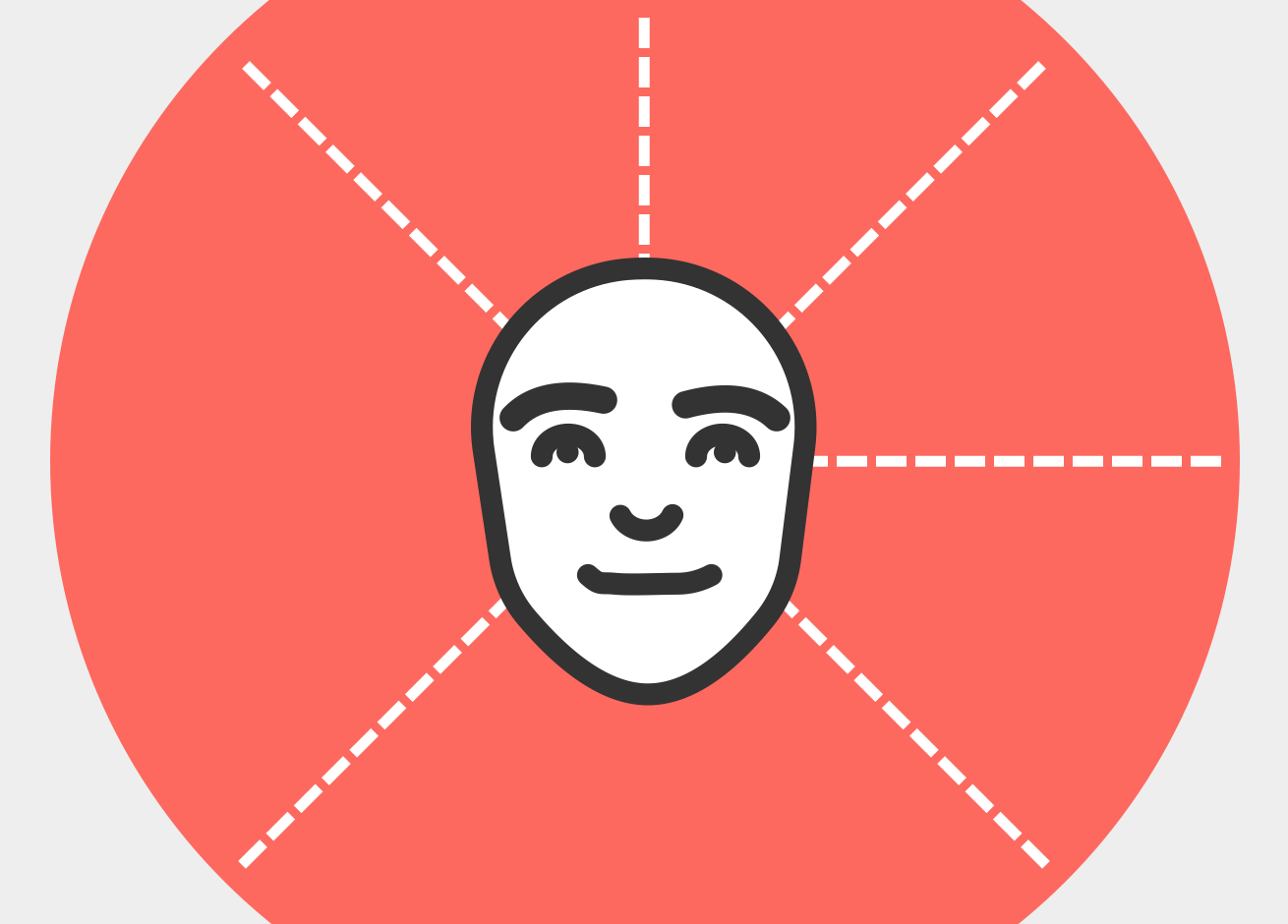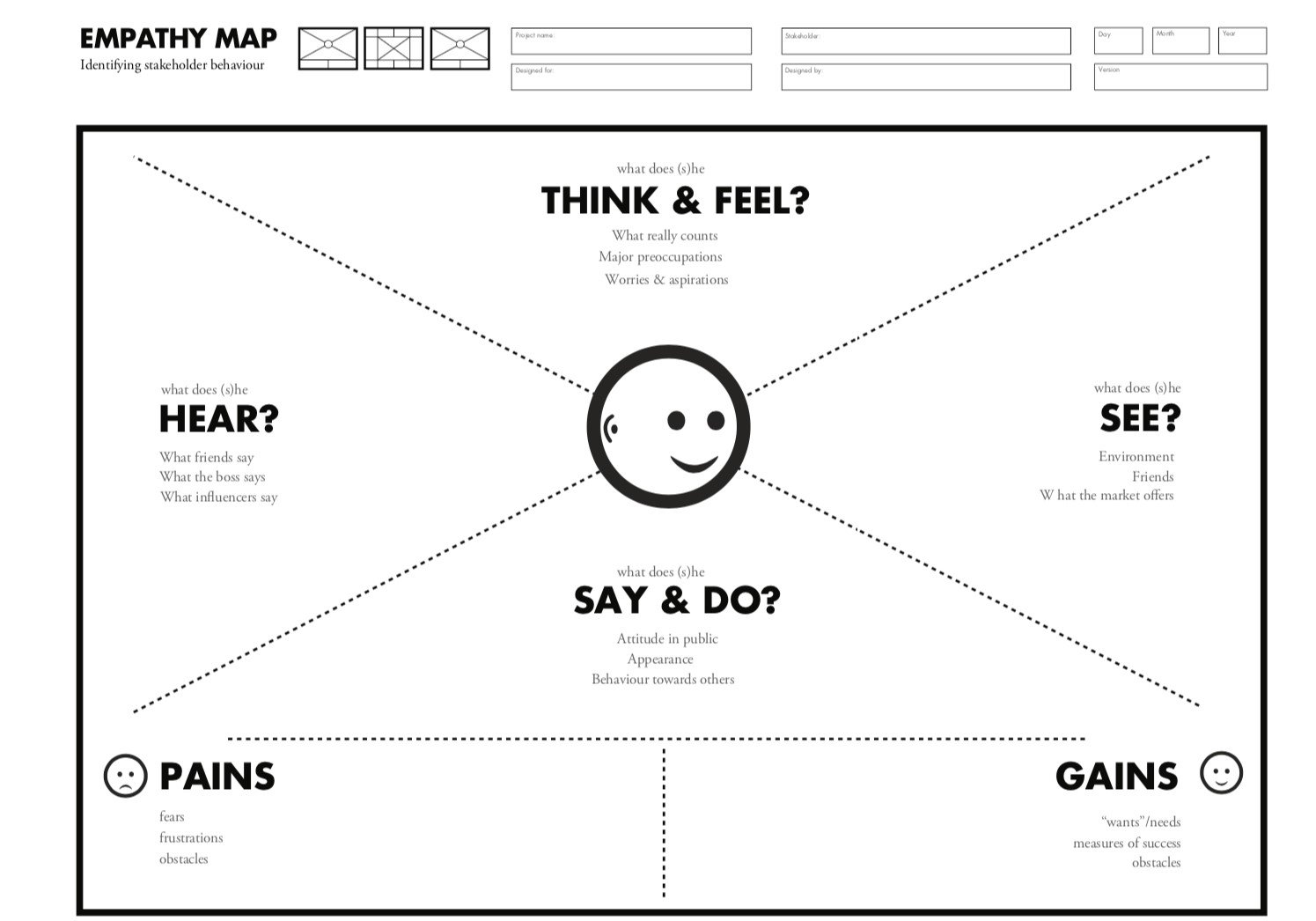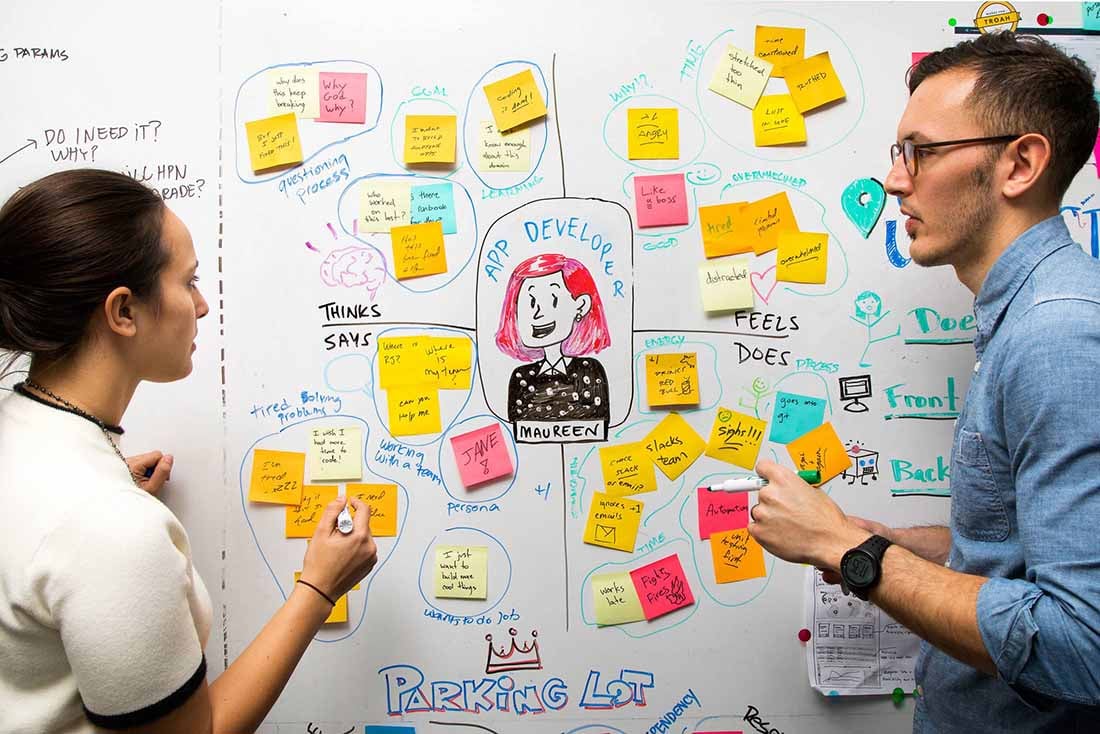
What it is and how to make an empathy map for UX
An empathy map can help you know the most important aspects of your customers to sell more, do you want to know how? Keep reading!
UX professionals work the most with empathy maps. However, to do so, you not only have to understand your users, you also have to put yourself in their shoes to prioritize their needs.
Empathy maps, widely used in agile, design and marketing communities are a fundamental tool to achieve both.
Need To Make an Empathy Map? Let us help you and show you how you can implement User Research in your company!
What is an empathy map?
An empathy map or Empathy Map is, as its name suggests, a type of map or guide that helps companies define the characteristics of their customers.
From his name and age to his tastes and weaknesses.
All the aspects that define the empathy map are related to your emotions.
For example, what do you think, what do you listen to, what topics interest you, what needs do you have or what are the things that bother you the most.
It is a way of entering the minds of your target audience to understand them and offer them the products and services that they need the most or that can attract their attention the most.
Based on this, companies create profiles of their buyer persona and offer personalized products.
In summary, the empathy map is a framework that allows us to ask ourselves the necessary questions to understand what the needs of our clients / target audience are.
That way we will be able to empathize much better with them and offer them much more personalized products and services.
Characteristics of an empathy map
Traditional empathy maps are divided into 4 quadrants (Say, Think, Do and Feel), with the user or person in the center. Empathy maps provide insight into who a user is as a whole, which are neither chronological nor sequential.

What the user says
The "Says" quadrant contains what the user says out loud in an interview or some other usability study. Ideally, it should contain verbatim and direct quotes from the research.
- «I am loyal to Delta because I never have a bad experience»
- «I want something reliable»
- «I don't understand what to do from here»
What the user thinks
The Thought Quadrant captures what the user is thinking throughout the experience. Ask yourself (from the qualitative research collected): What occupies the user's thoughts? What does the user care?
It is possible to have the same content in both Says (say) and Thinks (think). However, pay particular attention to what users think, but are not willing to vocalize.
Try to understand why they are reluctant to share: are they insecure, self-conscious, polite, or afraid to tell others?
"Why don't I understand this?"
What the user does
The "Does" quadrant completes the actions that the user performs. From the investigation, what does the user do physically? How does the user do it?
- Refresh the page several times.
- Look for information to compare prices.
What does the user feel
The feelings quadrant is the user's emotional state, often represented as an adjective plus a short phrase for context. Ask yourself: What worries the user? What excites the user? How does the user feel about the experience?
- Impatient: pages load too slowly
- Confused: too many conflicting prices
- Worried: you are doing something wrong
Our users are complex human beings. It is natural (and very beneficial) to see juxtapositions between quadrants. You will also find inconsistencies: for example, apparently positive actions but negative quotes or emotions coming from the same user.
It is then when the empathy maps become treasure maps with which to discover valuable actions and improve the user experience or Customer Experience.
Some of these quadrants may appear ambiguous or overlapping; for example, it can be difficult to distinguish between Thoughts and Feelings.
Don't focus too much on one thing - if an item can fit into multiple quadrants, choose one.
The 4 quadrants exist only to boost our understanding of users and to make sure we don't miss out on any important dimension.
If you have nothing to put in a certain quadrant, it is a sign that you need more research on users before moving forward with the design process.
How to make an empathy map
Follow these steps to create a valid and useful empathy map:
Define the scope and objectives
What user or person are you going to map? Are you going to map a person or an individual user? Always start with a 1: 1 mapping (1 user / person per empathy map). This means that if you have multiple people, there should be an empathy map for each one.
Define the primary goal for empathy mapping
Is it to align the team with its user? If so, make sure everyone is present during the empathy mapping activity. Is it to analyze the transcript of an interview? If so, set a clear scope and timeline for your effort to ensure you have time to map multiple user interviews.
Gather your supplies
Your purpose should dictate the medium you will use to create an empathy map. If you're working with an entire team, have a large whiteboard, sticky notes, and markers handy.
If it's a solo empathy map, create a system that works for you. The easier it is to share with the rest of the team, the better. Tools like Creately are perfect for creating empathy maps.
Pick up the research
Gather the research that you will use to fuel your empathy map. The empathy map is a qualitative method, so you will need qualitative inputs: interviews with users, field studies, newspaper studies, listening sessions or qualitative surveys.
Make individual sticky notes
Once you have input from the investigation, you can proceed to develop the map as a team. At first, everyone should read the investigation individually. As each team member assimilates the data, fill out sticky notes that fit the four quadrants. From there, team members can add their notes to the map on the board.

Gather the group and summarize
In this step, the team collaboratively analyzes the sticky notes on the board and groups similar notes that belong to the same quadrant. Name your groupings with themes that represent each group.
Repeat the topics in each quadrant if necessary. The grouping activity facilitates discussion and alignment, with the goal of all team members reaching a shared understanding of their user.
Once the empathy map has been put together, you can start talking and aligning yourself as a team with the results. What outliers (or data points that do not fit into any group) are there? What themes are repeated in all the quadrants? What themes only exist in one quadrant? What gaps exist in our understanding?
Make a plan
If you think you need more details or have unique needs, adapt the map by including additional quadrants (such as the objectives in the example below) or by increasing the specificity of the existing quadrants.
Depending on the purpose of your empathy map, polish and digitize the result accordingly. Be sure to include the user, pending questions, date, and version number. When you're done, go back to the empathy map to guide UX decisions.
Reasons to make an empathy map
Empathy maps should be used throughout any UX process to establish common ground among team members and understand and prioritize user needs. In user-centered design, empathy maps are best used early in the design process.
Both the empathy mapping process and the final artifact have important benefits for the organization. The empathy mapping process helps categorize user knowledge in one place. It can be used to:
- Categorize and make sense of qualitative research: With research notes, survey responses, transcripts of user interviews.
- Discover new opportunities: Important to identify the types of research needed to address them. A poor empathy map indicates that more needs to be done.
- Create People: Aligning and grouping empathy maps that span individual users.
- Communicate a user or person to others: An empathy map is a quick and digestible way to illustrate the attitudes and behaviors of users. Once created, you must act as a source throughout the project and protect it from biases or unfounded assumptions.
Empathy map example
To finish, we are going to show you an example of an empathy map so that you understand 100% how to make an empathy map. In this case we will put Sebastian as a potential client of our product, let's imagine a garment:
- Name: Sebastian
- Age: 40 years
- What does it say: "I was expecting something different", "What size do I choose?", "Which brand do you like best?", "I want some confidence"
- What do you think: "Which one will be the best for me?", "Am I making the right choice?", "I want something that stands out."
- What it does: Surf the web, list the pros and cons, ask friends, do a lot of research, compare products.
- What you feel: fear, anxiety, excited or excited, etc.
When you have all the quadrants complete, your empathy map is ready!
From there, something that is essential is to try to immerse yourself in the map and put yourself in the place of the other. By doing this with your customers, you will be able to understand them better to offer them the product that best suits them.
Need To Make an Empathy Map? Let us help you and show you how you can implement User Research in your company!
